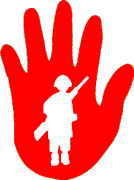|
|
Ukupno su 920 korisnika na forumu :: 62 registrovanih, 8 sakrivenih i 850 gosta :: [ Administrator ] [ Supermoderator ] [ Moderator ] :: Detaljnije Najviše korisnika na forumu ikad bilo je 3195 - dana 09 Nov 2023 14:47 - Korisnici koji su trenutno na forumu:
- Korisnici trenutno na forumu: 04bokibole, Ailton, Asparagus, Ba4e, bbrasnjo3, Bob.Rock, bojank, crnogorac, d.arsenal321, dimitrije.muzur, Dioniss, Dogma21, doktor097, Dukelander, dule10savic, dusanobr, Dzoni70, esx66, Feller, FOX, gigi, Goran_, Hardenberg, HrcAk47, Karaula, KonstantinR, Lieutenant, Limeni91, mean_machine, mexo, milenko1980, mir, Mićko, Naj-Turs, nenad81, neutrino, nikolaus112, novator, pein, ping15, Pohovani_00, PrincipL, raso76, sale755, Saratoga, sekretar, sony771, ss10, StalniPromatrač, stankolich, stevanito, Tila Painen, Token, tooljan, Tumansky, valuk1, Viktor Petrenko, Vladimir Veliki, Vlado82, Vrač, zdrebac, Zec
|





















